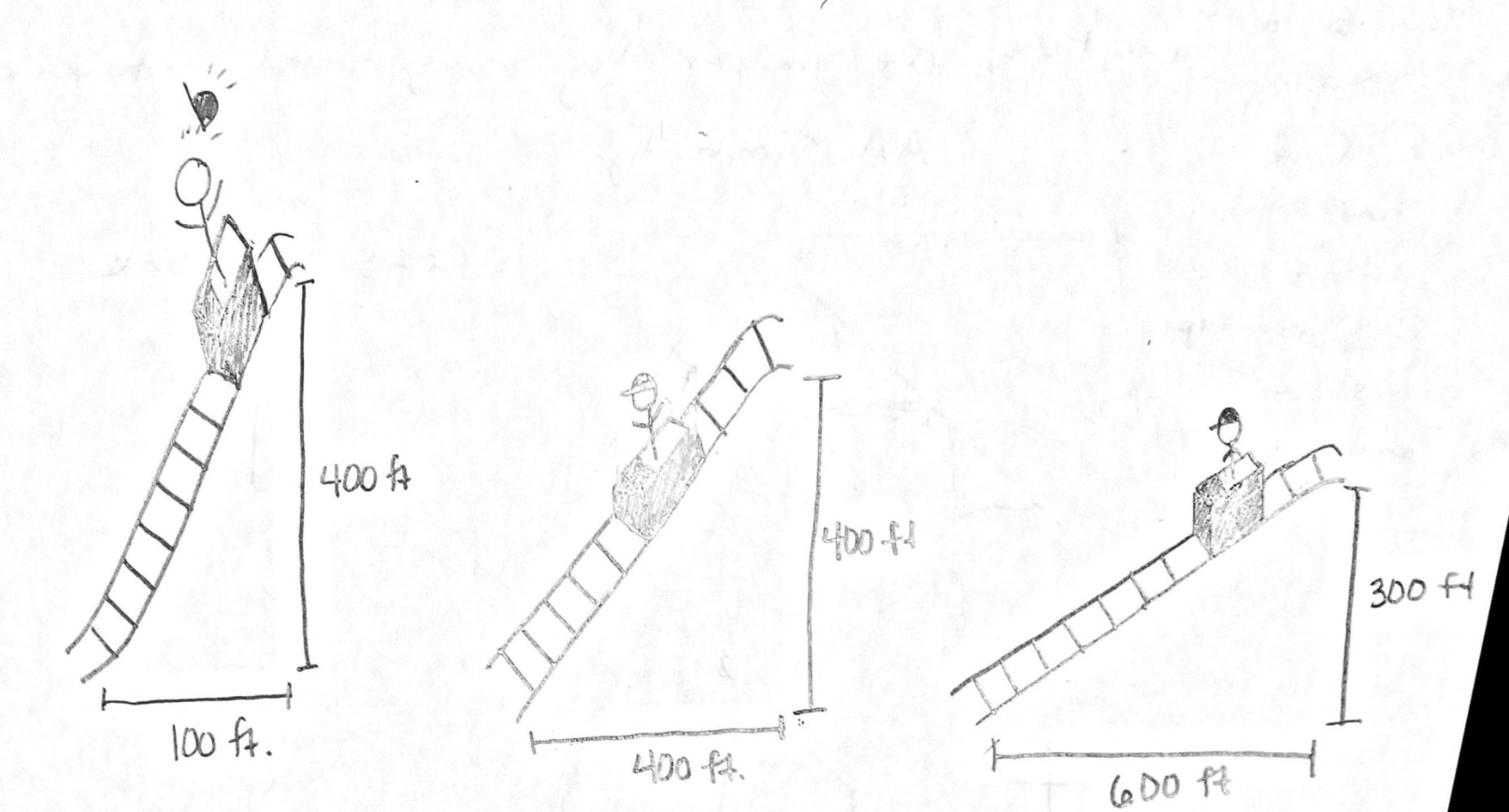Getting to Know Slope!
SOME SIMPLE INSTRUCTIONS
Learning Objectives (Today we will...)
Warm-up
1) Which is the best representation of a quotient?
2. What do we call lines that do not intersect?
3. How do you know?
Out of the 3 rollercoasters that are drawn below which of them is the steepest? Describe your thinking.

How do we determine slope?
Question 1:
Notice what the slope equals in the upper left corner. Where on the triangle is the program getting this fraction from?
Question 2:
Create a triangle where the left white dot is BELOW the right dot. What is your slope? If a marble were on the ramp, would it be going up or down the ramp? Explain
Question 3:
Create a triangle where the left white dot is ABOVE the right dot. What happened to your slope? If a marble were on the ramp, would it be going up or down the ramp? Explain
Question 4:
Is the slope a quotient?
Explain your answer to number 4.
Lines with the same slope
Question 1:
As you play around with the slope of the two lines, what happens when you set the slopes equal to each other? What do you notice?
Question 2:
Set one of the slopes to -2 and the other to 0.5. What kind of lines did you create? What do you notice about the lines?
Slope Triangles
Is Triangle 1 a slope triangle?
Is Triangle 2 a slope triangle?
Why is Triangle 3 a slope triangle?
I claim that all 4 triangles in this activity can be used to find the slope of the line.
How would you defend this argument?
Extended Questions
Rewrite the following in your own words. (describe slope in your own words) The definition of “slope” is the quotient of the vertical distance and the horizontal distance between any two points on a line.
Your skateboarding down a hill, you're going pretty fast and you estimate the slope of the hill to be around -5. Your friend is skating right next to you and claims his hill has a slope is -6. Is this possible if you are on the same hill? Justify your answer.
Using what you know about slope, which rollercoaster from the drawings was actually the steepest? Justify your answer.